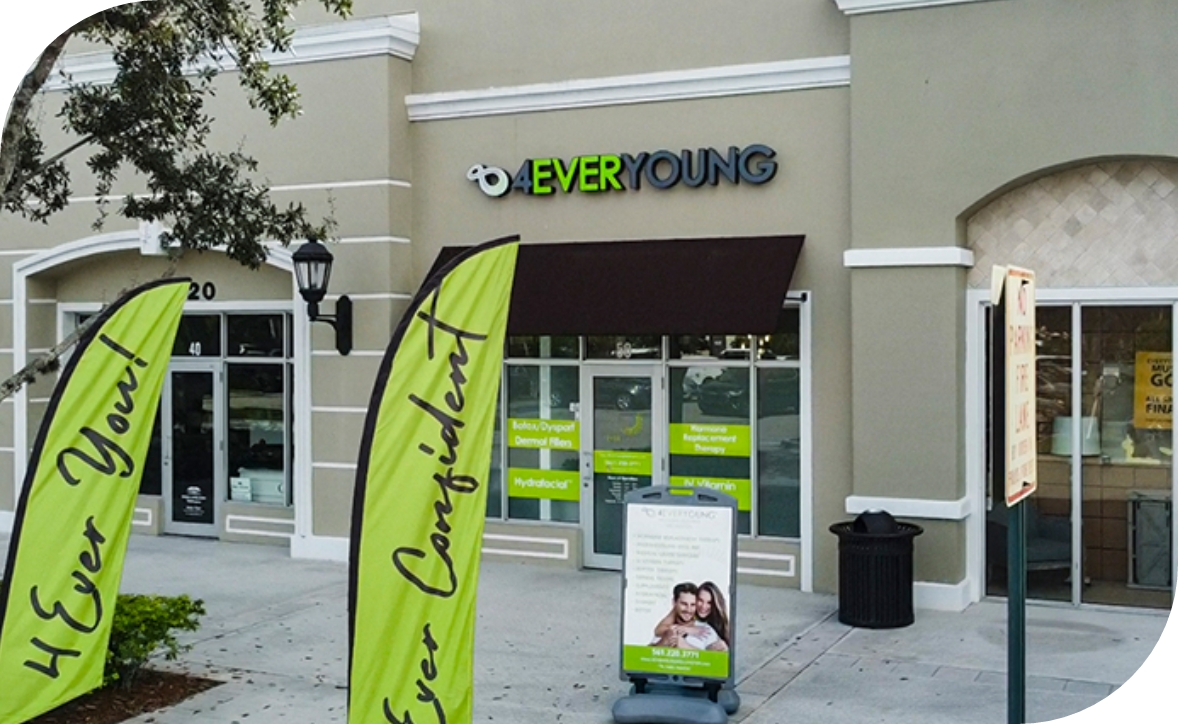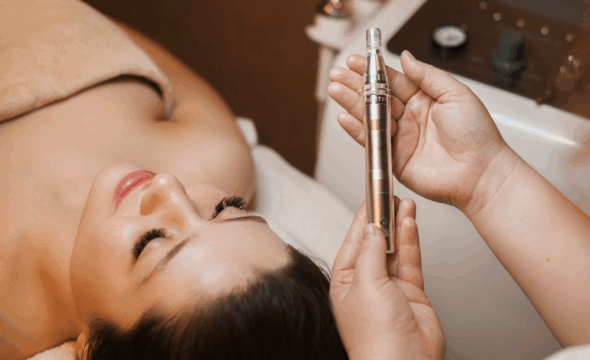The Benefits of Microneedling for Acne Scars and Fine Lines
Microneedling is a minimally invasive skincare treatment that uses a tool with sterile needles to create small punctures on the skin’s surface. These micro-injuries stimulate your body’s natural healing process, prompting it to generate new collagen and elastin. As the skin repairs itself, it becomes smoother and firmer. This helps reduce the appearance of scars and uneven texture. Because it doesn’t rely on chemicals or surgery, this skin needling treatment has become a go-to option for those seeking natural improvements in skin quality without extensive downtime.
Microneedling for Acne Scars: Targeting Texture and Discoloration
How Micro-Injuries Stimulate Scar Remodeling
When the microneedling device creates controlled micro-injuries on the skin, it triggers a healing response that leads to the production of collagen and elastin. These proteins are essential for skin strength and flexibility. The process helps break down uneven scar tissue while supporting the growth of smoother skin. As a collagen boosting treatment, microneedling gradually improves skin tone and softens the depth of scars without harming surrounding areas. This natural remodeling offers long-term improvements, particularly for individuals struggling with residual marks from past breakouts.
Loosening Fibrous Tethering Beneath Atrophic Scars
Many acne scars are classified as atrophic, meaning they sit below the skin’s surface due to tissue loss. These indentations can make the skin appear uneven or rough. The needles help disrupt the fibrous bands beneath these scars, releasing the tension that pulls the skin downward. This lifting effect makes the skin surface appear more even over time. By addressing the structural cause of the depression, the best treatment for acne scarring offers a physical improvement that many topical products cannot achieve. Acne scars can also cause discoloration and blotchiness. Microneedling enhances pigment balance by encouraging the skin to shed damaged layers and replace them with evenly toned new skin. The tiny punctures promote skin cell turnover, which can help fade red or brown spots. As a result, the complexion becomes smoother and more uniform, reinforcing one of the many microneedling skin benefits.
Microneedling for Fine Lines and Anti-Aging Results
Reduce Wrinkles and Laxity
With age, collagen production slows down, leading to the formation of lines, wrinkles, and sagging skin. Microneedling reactivates this natural process by encouraging the body to generate new structural proteins. Each treatment session builds upon the last, helping to reduce the depth of fine lines and restore firmness. As a trusted anti-aging facial treatment, microneedling targets areas prone to early signs of aging, allowing the skin to regain elasticity and a firmer appearance without surgical intervention. This approach can support long-term skin health and consistent renewal at an anti-aging skincare clinic.
Enhancing Skin Plumpness and Light Reflection
As collagen levels increase after microneedling, the skin appears fuller and more hydrated. This added volume helps reduce the visibility of fine lines, making the face appear more youthful. Additionally, the smoother surface created by new skin cells allows light to reflect more evenly, giving the complexion a healthy glow. These changes contribute to a rejuvenated look, reinforcing the value of microneedling for fine lines as part of an ongoing skincare routine.
Combined with Antioxidants and Moisturizers
Applying antioxidant-rich serums or hydrating products immediately after treatment can maximize their impact. This pairing helps protect the skin from environmental stress while nourishing it from within. The result is a more effective treatment that supports overall healing and glow. Combining microneedling with nourishing skincare enhances both immediate and long-term effects, strengthening the case for this approach as a comprehensive collagen boosting treatment.
What to Expect During a Professional Microneedling Session
Pre-Treatment Consultation
A structured pre-treatment consultation is crucial for tailoring the procedure to the individual and minimizing risks. Below are the key components:
- Skin Evaluation: The provider will assess your skin tone, texture, hydration level, and sensitivity. They may use magnifying tools or digital imaging to identify specific issues such as uneven pigmentation, scarring, enlarged pores, or fine lines. This allows them to tailor the needle depth, treatment technique, and any post-treatment product recommendations to your skin’s unique needs. A thorough skin evaluation is also an opportunity to identify any factors that may influence healing time or response to the procedure, such as oil production or barrier strength. Someone with thin or reactive skin may require a gentler approach compared to someone targeting deep acne scars. This assessment ensures the treatment is as effective as possible while minimizing the risk of post-procedure irritation.
- Medical Screening: Before moving forward with treatment, it’s essential to conduct a full medical screening. This step extends beyond skincare, as your provider will inquire about recent illnesses, medications, allergies, and chronic conditions that may impact the outcome. Conditions such as active acne or psoriasis may require stabilization before proceeding. If you’ve used isotretinoin (Accutane) within the past six months, for example, microneedling may not be advisable. The goal is to ensure that you’re a suitable candidate for the procedure and that your body can respond positively without increased risk of complications. This medical screening prioritizes safety and enables your provider to make informed decisions about how to proceed.
- Numbing Application: To make the procedure as comfortable as possible, a topical anesthetic is applied to the treatment area before microneedling begins. This numbing cream typically takes 20–30 minutes to take effect, during which you’ll be asked to relax while the product absorbs into the skin. The goal is to minimize discomfort from the microneedles, especially in sensitive areas such as the cheeks or around the mouth. The strength and type of anesthetic used may vary depending on your provider and your sensitivity level.
- Skin Cleansing: After the numbing cream has taken effect and is gently removed, your provider will thoroughly cleanse your skin to eliminate any remaining oils, makeup, or residue. This cleansing step is critical because any impurities left on the skin’s surface can be pushed deeper by the microneedles, potentially leading to breakouts or infections. A medical-grade cleanser is typically used to ensure a sterile base for treatment.
- Final Check-In: Just before the treatment begins, your provider will conduct a final check to ensure your skin is fully numb and ready for treatment. They’ll also take a moment to address any lingering questions or concerns you might have. This is your opportunity to ask about what to expect during the session or what products will be used in conjunction with the procedure. Confirming your comfort level is both a courtesy and a practical necessity.
Establishing a thorough pre-treatment routine is essential to the effectiveness of any microneedling procedure. When performed at a med spa clinic, you will be handled with great care.
Post-Treatment Serums
Because the micro-channels remain open for a short time, serums rich in hyaluronic acid, peptides, or growth factors are applied to support recovery and enhance microneedling results. These substances penetrate more deeply than they would on untreated skin, making this step highly valuable. Only high-quality products must be used at this stage to avoid irritation.
Immediate Aftereffects
It’s normal for the skin to appear flushed or red, similar to a mild sunburn. Some people also experience tightness or a tingling sensation for a few hours. These responses indicate that the body has initiated its natural healing process. The intensity of these effects can vary based on the depth and intensity of the session. When performed by trained professionals, these symptoms typically resolve within a day or two.
Post-Microneedling Care and Recovery Tips
Do’s and Don’ts in the First 24–72 Hours
Patients should follow all care instructions provided by the best anti-aging wellness clinic to ensure a successful healing period. Avoid sun exposure, excessive sweating, and using exfoliants or active skincare ingredients. Such products can overwhelm the skin, which is already working hard to repair itself. Instead, focus on calm, gentle care that supports recovery. Staying away from makeup during this window is also recommended. Proper care during this phase helps reduce the risk of complications and enhances your microneedling recovery experience.
Skincare Routine for Healing
During the healing process, the skin’s barrier is more vulnerable, which makes your post-care regimen incredibly important. Here’s how to build an effective healing regimen:
- Cleanse with Care: Choose a sulfate-free cleanser that doesn’t disrupt your skin’s natural moisture balance. Harsh cleansers can exacerbate inflammation and impair the skin’s ability to recover. Instead, reach for a cleanser with calming ingredients like aloe vera, chamomile, or oat extract, which soothe irritation and remove impurities without triggering redness or dryness. Use lukewarm water to rinse, and pat your face dry with a clean, soft towel. Cleansing in the morning and evening is usually sufficient; skipping this step altogether can leave residual bacteria or treatment products that may clog pores.
- Apply Hydrating Serums: Once your skin is cleansed and slightly damp, the next step is hydration. A serum with hyaluronic acid is especially effective because it binds water to the skin, plumping tissue and minimizing the tight, dry feeling that often follows treatment. Look for products that contain multiple weights of hyaluronic acid for layered hydration. Serums with panthenol (vitamin B5) or allantoin can further calm inflammation and encourage cellular repair. Keep your formula free of active exfoliants like retinol or acids, which can disrupt the fragile healing environment. It’s essential to apply hydrating serums immediately after cleansing when the skin is still slightly damp, as this locks in moisture and maximizes the serum’s effectiveness.
- Use a Barrier-Rebuilding Moisturizer: Focus on formulations that contain barrier-repairing ingredients such as ceramides, cholesterol, and peptides. These components mimic the skin’s natural lipid structure, accelerating regeneration and helping to close microscopic wounds while preventing transepidermal water loss. Some moisturizers also include niacinamide to reduce inflammation, boost elasticity, and reinforce the skin’s structure without being too active or irritating. Ointment-style products may also be beneficial for extremely dry or sensitive skin types. Apply the moisturizer twice a day, or more frequently if needed, especially in environments with dry air or frequent wind exposure.
An intentional skincare regimen during recovery is foundational. You give your skin the tools it needs to heal with resilience and radiance.
How to Avoid Post-Inflammatory Hyperpigmentation
People with medium to deep skin tones need to be especially cautious about post-treatment pigmentation changes. Heat and inflammation can sometimes trigger melanin production, leading to dark spots. To reduce this risk, sun protection is essential in the days and weeks following microneedling. Using products that contain vitamin C may also help brighten the skin. However, only introduce these ingredients once the skin has calmed and your provider gives the green light. Seeking care from a provider experienced in treating diverse skin types ensures more balanced microneedling for scars.
Who Should Consider Microneedling
Conditions Requiring Medical Clearance or Avoidance
Certain conditions require caution or medical clearance. Individuals with open wounds or infections should postpone treatment to avoid complications. Likewise, individuals with a history of keloid scarring or other chronic skin conditions should consult a medical provider before proceeding. Pregnant women are often advised to wait until after delivery. As mentioned, a thorough consultation ensures the treatment won’t aggravate existing issues.
At-Home Devices vs. Professional Microneedling
Although at-home microneedling rollers are available for purchase, they differ significantly from treatments done in clinical settings. Home devices generally feature shorter needles, which do not penetrate the skin deeply enough to stimulate lasting collagen remodeling. Moreover, without proper sanitation and technique, at-home tools can increase the risk of infection and irritation. In contrast, medical-grade microneedling utilizes sterilized equipment and targeted techniques to achieve optimal results. Choosing a certified clinic ensures safety and a higher likelihood of seeing noticeable improvements.
Microneedling continues to earn its reputation as a powerful tool for skin rejuvenation, offering a balanced approach to addressing multiple concerns. It helps break down the appearance of acne scars and gradually improves skin tone. In addition to correcting imperfections, the treatment also promotes long-term skin health by stimulating the body’s natural repair mechanisms. As an acne scar removal, it supports smoother and more radiant skin without relying on harsh chemicals or surgery. For those seeking non-invasive yet effective solutions, microneedling offers noticeable improvements that build with each session.







